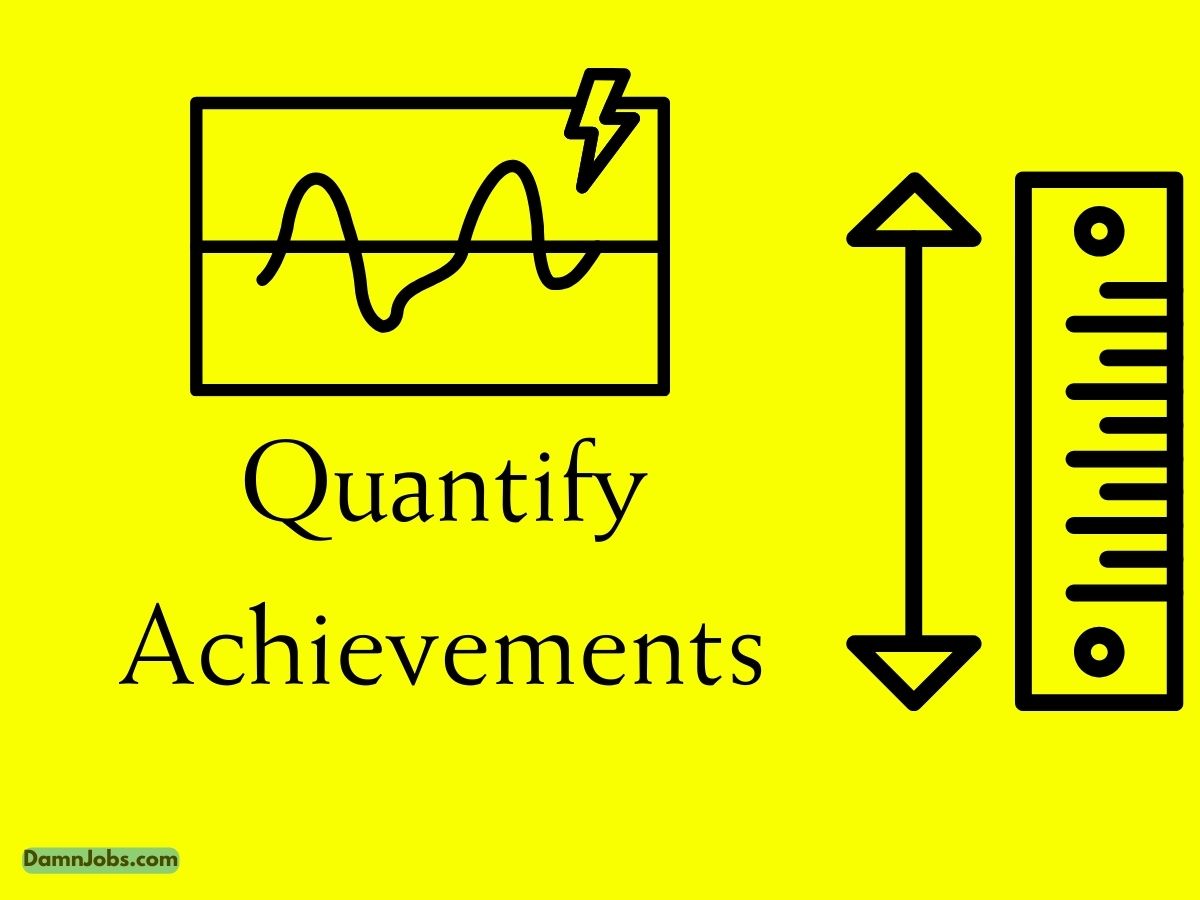How to Quantify Achievements on Your Resume
When crafting a resume, it’s essential to showcase not just your responsibilities but the tangible impact of your work.
Quantifying your achievements with numbers can make your resume stand out by providing concrete evidence of your success.
Here’s how to effectively turn your accomplishments into impactful numbers that grab the attention of hiring managers.
1. Understand the Power of Quantification
Why Numbers Matter
Numbers give context to your achievements and make them more compelling.
They help potential employers understand the scale of your success and how you can contribute to their organization.
Example:
Instead of saying, “Managed a team,” say, “Led a team of 15 members.”
Choose the Right Metrics
Focus on metrics that are relevant to your role and industry.
Common metrics include revenue growth, cost savings, project completion rates, and performance improvements.
Example:
- Revenue Growth: “Increased sales revenue by 30% over 12 months.”
- Cost Savings: “Reduced operational costs by $50,000 annually.”
2. Identify Key Achievements to Quantify
Review Your Role and Responsibilities
Look at your past roles and responsibilities. Identify which aspects had measurable outcomes and can be quantified effectively.
Example:
If you improved customer satisfaction, find out if there were measurable results such as increased survey scores or reduced complaints.
Focus on Impactful Contributions
Highlight achievements that had a significant impact on your organization. These could include successful projects, process improvements, or financial gains.
Example:
- Project Management: “Completed a project two months ahead of schedule, saving the company $20,000 in project costs.”
3. Use Specific, Concrete Numbers
Provide Exact Figures
Whenever possible, use specific numbers rather than general estimates. Exact figures provide clarity and credibility to your achievements.
Example:
- Sales Achievement: “Grew client base by 200 new accounts in one year.”
Include Percentages and Ratios
Percentages and ratios can be powerful in illustrating the extent of your achievements. They show relative improvements and comparisons.
Example:
- Performance Improvement: “Improved customer retention rates by 25% over six months.”
4. Incorporate Financial Impact
Highlight Revenue and Cost Impacts
Show how your work contributed to financial outcomes. This could include increased revenue, cost savings, or budget management.
Example:
- Revenue Increase: “Generated an additional $1 million in annual revenue through new business development strategies.”
Show ROI (Return on Investment)
If applicable, demonstrate the return on investment (ROI) for projects or initiatives you led. This illustrates the value you brought to the organization.
Example:
- Marketing Campaign: “Implemented a marketing campaign that resulted in a 150% ROI.”
5. Showcase Efficiency and Productivity Gains
Measure Process Improvements
Quantify how your efforts led to more efficient processes or increased productivity.
This can include time savings, streamlined operations, or enhanced team performance.
Example:
- Process Improvement: “Streamlined the onboarding process, reducing time to productivity by 40%.”
Highlight Achievement Timelines
Demonstrate how quickly you achieved your results. Shorter timelines can indicate efficiency and effectiveness.
Example:
- Project Delivery: “Delivered a critical project three months ahead of schedule.”
6. Use Comparative Data
Benchmark Against Industry Standards
If possible, compare your achievements against industry standards or benchmarks.
This can highlight how your performance stacks up in a broader context.
Example:
- Market Position: “Achieved a market share increase of 10%, surpassing the industry average growth of 5%.”
Show Improvement Over Time
Illustrate how your achievements led to improvements over time. This can demonstrate sustained success and long-term impact.
Example:
- Year-over-Year Growth: “Increased annual sales growth from 15% to 25% over two years.”
7. Tailor Achievements to the Job Description
Align with Job Requirements
Match your quantified achievements with the requirements of the job you’re applying for. This helps demonstrate that you have the skills and experience needed for the role.
Example:
- Job Requirement: “Experience in scaling business operations.”
- Quantified Achievement: “Scaled operations to support a 50% increase in business volume.”
Highlight Relevant Metrics
Focus on metrics that are most relevant to the position you’re applying for. This makes your resume more compelling and targeted.
Example:
- Customer Service Role: “Increased customer satisfaction scores by 15%.”
8. Present Data Clearly
Use Bullet Points for Clarity
Organize your achievements using bullet points. This makes it easier for hiring managers to scan and digest the information quickly.
Example:
- Increased sales revenue by 30% over 12 months.
- Reduced operational costs by $50,000 annually.
Include Visuals Sparingly
In some cases, simple graphs or charts can help illustrate your achievements, but ensure they are ATS-compatible and not overly complex.
Example:
- Sales Growth Graph: “Displayed a 25% increase in quarterly sales over the past year.”
Conclusion
Quantifying your achievements on your resume is a powerful way to showcase your impact and stand out to employers.
By using specific numbers, highlighting financial impacts, showcasing efficiency gains, and tailoring your data to the job description.
You can create a compelling resume that effectively communicates your value.
Remember, the key is to turn your successes into measurable results that clearly demonstrate your contributions and potential.

